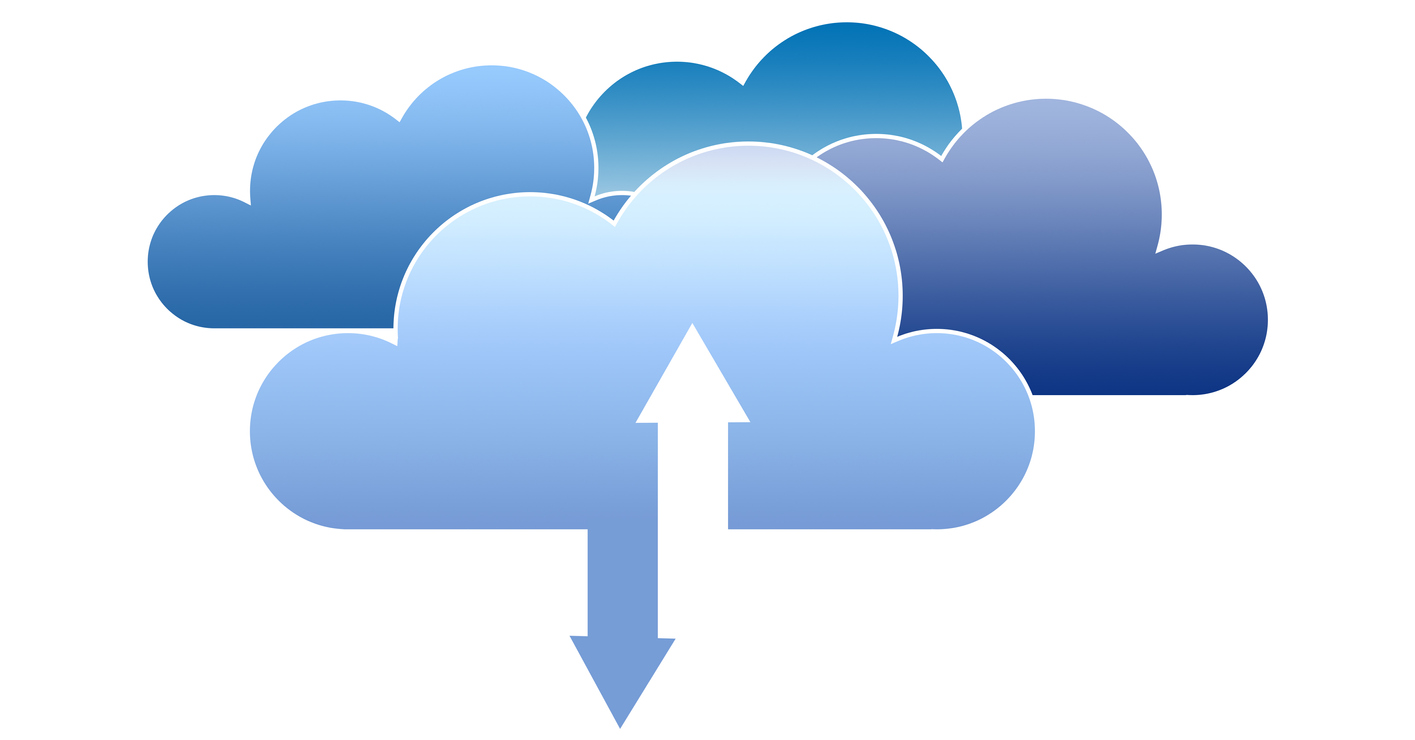Leaders across CCL and Leaven predict that optimising costs and catering to remote workforces will see more organisations seeking to transform, with opportunities emerging through partnerships.

New Zealand organisations are spending more on information technology than ever before – projected to total NZ$14.7 billion in 2022, up 6.7% from 2021 (Gartner, 2021).
Uptake of spending on IT services is predicted to grow 6% to almost $4.4 billion in 2022. This growth reflects a broader shift from IT ownership to cloud services, as organisations invest in cloud over on-premises technology. Alongside this trend, other organisations are continuing to invest in building and maintaining their private cloud capability. As the range of possible IT services grow, so do managed services, consulting, and cloud infrastructure-as-a-service (IaaS). These are forecast to jump to more than $1billion in 2023, up from $450million in 2020. These trends show that IT remains in demand, becoming more important for businesses, and the consumers who use its products and services.
As organisations seek expertise on expanding business value in a fast-changing future, IT is a necessary and growing investment focus. CCL and Leaven leaders jointly contributed to discuss what technological changes are to come for 2022.
Prediction 1: Partnerships will be used to address gaps and achieve scale
In 2022, more organisations will scale their operations by embracing partnership models, thinking ahead to the future, and building shared value from the foundation up.
Partnership is an often-used word – but the reality is that for any C-suite executive, markets are increasingly complex. Partnerships are a solution to the constant need to keep abreast of technological change.
Partnerships offer much to businesses: linking understanding of often esoteric and fast-changing technologies to customer need, and mobilising solutions. Partnerships enable organisations to share diverse competencies and resources, to respond to customer need collaboratively with their respective trades. The real power will be business leaders who wisely use complexity, partnering to turn it into change that delivers shared, real value. With ongoing competition to retain and secure people talent, AI, automation and tooling create room for improving partnerships between clients and employees.
Prediction 2: Hybrid solutions to empower talent and adapt
In 2022, organisations will focus on building more hybrid work environments to support remote employees and deliver value as demands grow and change.

Presence on the public cloud will widen the availability of new capabilities and opportunities for partnership. Organisations are becoming more aware of the need for retaining, attracting, and building a sustainable workforce. This has become increasingly the case with COVID-19 and border closures. Another contributing factor is the entry of hyperscalers who’ll be competing for talent. With the move to flexible working, organisations are experiencing pressure to move to the cloud faster.
Long-term remote working has become accepted practice for many organisations, and, as workers have moved from their offices to off-site locations, organisations have realised the need to be prepared.
In response to anticipated workforce shortages, organisations continue to assess and change how they collaborate in the new COVID-19 normal world, with leaders looking to find balance between scale, speed, privacy and security. The best flexible working comes with secure and accessible technologies that support their remote working yet find ways to achieve cohesive team culture. This is a key reason why many companies are now considering significant investments in hybrid cloud.
Similarly, working from home or locations other than the office, combined with cloud adoption, will reduce the need for large inner-city office spaces. As organisations rethink if and how the office is used, transforming towards hybrid workspaces will become a key concern. At the same time, working effectively in the hybrid office will require effort to do well. Organisations will be looking for ways to use technology to bring people back to communicate and collaborate based on common organisational goals. As organisations develop more employee-centric workplaces, they’ll realise the flexibility being cloud-native and using serverless strategies can deliver.
Prediction 3: Security will be a top-tier risk for all organisations
2022 will see evolving private – hybrid – public cloud IT environments with new responses to varied cyber attacks, elevating security to the boardroom.
As New Zealand organisations realise no one is immune to cyber-attacks, our security team expects data privacy and cybersecurity to be at the forefront of shifts onto the cloud. Top-level executives and boards are seeking assurance and guidance about managing the risk. To protect themselves, organisations are seeking service providers who understand the full context of their IT and cloud platforms. Cybersecurity will become more of the Executive Leadership Team’s domain or “team-sport” with more cohesive end-to-end cloud protection solutions sought.
Although we hope the worst of COVID-19 is over, the impact of the global pandemic can’t be overlooked, especially security. The shift towards greater use of desktops, laptops, smartphones, and other remote computing devices, all needing to be connected to official organisational documentation and systems, opens organisations to new and greater vulnerabilities and the potential entry of so-called bad actors.
The need for protection online has become increasingly accentuated with the upward trend of major local cybersecurity events in New Zealand. Think of the NZX hit in 2020 by Distributed Denial of Service attacks – halting the network and stopping trading lines. The Waitematā District Health Board incident in 2021 is another example, seeing hospital IT systems entirely shut down. These kinds of serious threats to organisational and personal safety are motivating organisations to seek out almost real-time and continuous monitoring from their technology leaders.
Service providers also need to update their cybersecurity offerings holistically. Security attackers are blurring the lines between these traditionally specific domains – such as Physical Security (or PHYSEC), Personnel Security (PERSEC), or Information Security (INFOSEC). Mitigating threats involves recognising possible gaps and interrelation points. Security is less seen as an isolated environment but as an increasingly integrated technology ecosystem that requires fresh thinking and ideas to manage effectively and efficiently.
Together, service providers can carefully manage these emerging risks, particularly in the context of movement to the cloud. Data stewardship, assurance, and security must be re-framed and contained within a business risk mitigation context—a greater collaboration between business and security leaders to be more forward-looking and predictive.
Prediction 4: Optimising technology costs will be a priority
As the cost of capital expenditure is realised, more organisations will see value in the public cloud. The cloud will be used for cost management and optimisation, to improve budgeting on an ongoing basis.
The ever-increasing acceleration towards wide spread cloud usage, as organisations realise the benefits that come with data integration and monitoring. Our transformation teams predict movement towards greater realisation of the cost management value of the cloud. The cloud will help solve challenges associated with outdated models and the accrued technical debt from heritage applications. Service providers will also need to adapt and stay on top of these ever-evolving requirements.
“OPEX Shock” will be more a reality for organisations as they go through the learning curve of the cloud. OPEX Shock is the cost of running systems on computer servers rather than serverless architectures when unanticipated pay-per-use usage costs arise from cloud applications. Suppose organisations move their projects out of transformation/transition phases and hand them back to under-resourced traditional operations teams. In that case, the impact of not allocating, managing or optimising cost optimisation and management will become real.
Cloud cost management and optimisation is the practical way to leverage technology savings using containerised resources, metrics-based alerts and automated activations. Cloud can be switched on easily, expanded and contracted, and has a usage-based pricing model. Organisations using virtual machines, for example, can scale them up and down in response to a workload when it is underutilised (such as, on weekends) or there’s increased demand (such as, peak traffic times). Organisations can set budget limits and have resources turned off when not needed.
As organisations figure out their best cloud pathways, they’re likely also to realise the realities of egress. Egress is leaving a cloud and transferring to an external location. The hyperscaling leading cloud providers sometimes charge for egress, so while customers may input data into the cloud for free, they may have to pay fees when they take it out. Our transformation teams predict, though, that egress charges for AWS and Azure will ease off with exponential traffic growth.
Prediction 5: More organisations will shift their applications to cloud
More organisations will start seeing value from the data platform investments they made earlier and start moving to data democratisation strategies.
Cloud adoption will continue to accelerate with more focus on cloud-native development and operating models in 2022. Movement from on-premises to private and public cloud is known in the tech industry as ‘lift and shift’. With the AWS and Azure regions announced for New Zealand, public cloud platforms will be more top of mind. It will be relevant across all technology environments, as organisations become more curious about how they forecast and manage costs across Development – Test – Production environments.

Our transformation leaders also believe there will be more opportunities for organisations dealing with deep learning models. Traditionally, extensive training and computation were required using heavy computing, meaning lost time, high costs, and storage and space issues, all of which reduced productivity. The new age of deep learning – enabled by machine learning (ML) and artificial intelligence (AI) – offers high efficiency for heavy computations, and GPUs, with faster model training made possible in parallel. With an expanding range of cloud deployment options, justifying on-premise infrastructure spend is likely to become more difficult.
At the same time, cloud will become an enabler for using augmented and virtual reality applications, as service providers look to offer new optionality for catering to the remote working context. There are more accurately designed, personalised and accessible offerings for remote experiences that are user-centric. Phones, headsets, and even head-mounted displays will become more real possibilities in the working and customer experience.
Prediction 6: IT and business providers will look to establish sustainability objectives
In 2022, sustainability will become a mainstream issue. IT and business providers will be required to measure and report their sustainability position.
With greater technology access and a need to drive more efficient and responsive services, there will be a substantial acceleration in cloud adoption and business strategising. Sustainability becomes a more important issue as national and global targets are set. This will bring about significant changes in how businesses strategise and work. Digital technology will play an important role, driven not only by the potentialities themselves but also by social-economic conditions like COVID-19, border closures, climate change, the increased aspirations of Generation Z in the workforce, and more prescriptive legislative requirements.
As sustainability influences future workforces and markets, some businesses are looking to prove their own sustainability mandate. Our teams have seen that organisations interpret sustainability in different ways in relation to their own business needs. More are likely to see a need to measure and understand how sustainability supply chains impact their business. impacts their business as a starting point. Once its place is more clearly defined, organisations will then begin to develop new policies and operational guidelines that inform their technology decision-making. They will seek to reduce the environmental costs of maintaining and repairing equipment. Environmental costs of maintaining and repairing equipment will be reduced. Emerging AI-technology as well as governable, scalable platforms, will be key to helping monitor and respond to energy outputs
Sustainability will also impact work environments in the future. Fewer people are in offices, while more expect green, sustainable, and collaborative environments.
As New Zealand organisations navigate a new year where uncertainty is the new normal, the CCL and Leaven teams are committed to sharing the IT and cloud insights that make a difference to business. Check back in with Cloud Concepts, and stay tuned for advice, guidance and practical technology pathways from our team.
Key Terms
|
Public cloud |
Clouds available for public use, with fees depending on the capacity of use. |
|
Private cloud |
Cloud computing resources held privately, on-premise or in a datacentre. |
|
Hybrid cloud |
A mix of private and public cloud use. |
|
Egress |
The act of exiting the cloud. |




